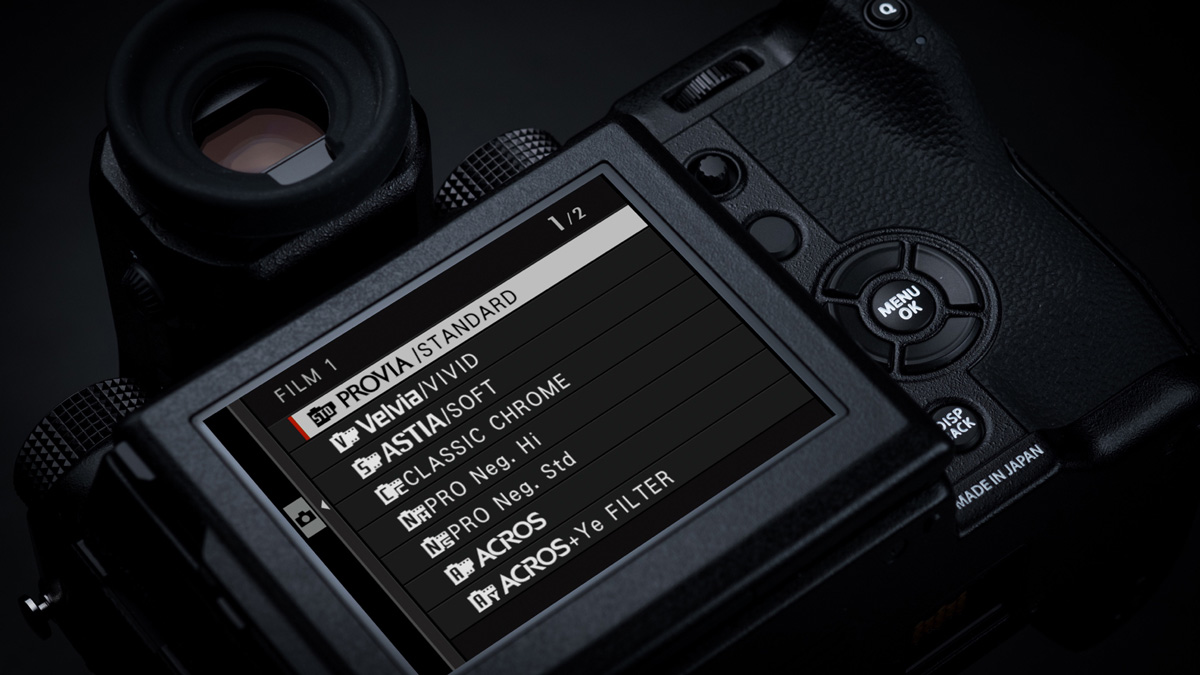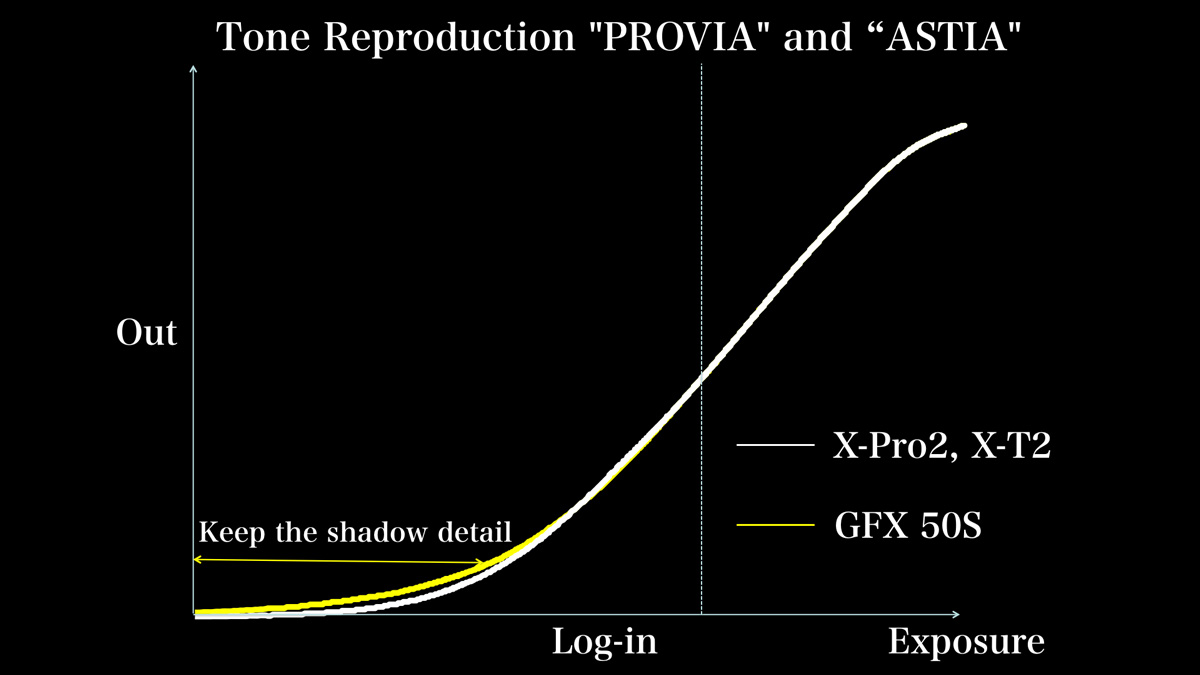
GFX Technologies #5
The GFX’s PROVIA and ASTIA film simulations appear ACROS-esque. Does this make sense? If you know what we mean, then you probably have had an in-depth shooting experience with the GFX. If you ve not had such an experience yet, we’ll elaborate.
We’ve explained the image design behind ACROS film simulation in The Newest Film Simulation “ACROS”. We’ve talked about the characteristics of graininess, expressive noise, shadow and highlight tone. The GFX’s PROVIA and ASTIA film simulations share similar image design ideals as ACROS.
The shadow tone is softer for the GFX’s PROVIA and ASTIA than for X Series cameras.
A medium format camera is often used in studio with perfect lighting setups. So we had to come up with a way to reflect the subtle changes in the lighting expression.
Truthfully, this was very difficult to achieve. Output had to appear true to PROVIA or ASTIA, yet the shadow tone had to be softer.
“Let’s change this a tiny bit.”
“It’s looking good.”
“Maybe we’ll change it a little more?”
“No, this is no longer PROVIA.”
“This is too much!”
We took photos and evaluated over and over both on monitor and in print to finally land on the best balance.
The development of ACROS was not easy, but looking back now, it was an easier task than PROVIA and ASTIA, as we started designing from scratch. But just as ACROS proved to be popular among photographers, we knew that the new PROVIA and ASTIA would be welcomed. We had to do this.
You may wonder, “what about Velvia or PRO Neg.?”. The fact is that only shadow tonality was changed for PROVIA and ASTIA. Remember what each film simulation is about, and what we are trying to achieve.
For example, the hard tonality is essential to create the world of Velvia and CLASSIC CHROME. Velvia communicates through color, so we have very vibrant tonality. CLASSIC CHROME reduces contrast and shadow area to make the image more narrative. So if shadow tones ever got softer for the two, the characteristics of Velvia and CLASSIC CHROME would be lost.
In case of PRO Neg., the lighting was already taken into account when we created the film simulation. We’ve gone in-depth on this article.
This film simulation is most suitable for shooting with the lighting setup. Just as U.K. X-Photographer Damien Lovegrove says, if you are creating your own light, then PRO Neg. will capture all that you want. PRO Neg. does not have high contrast like PROVIA or ASTIA. It does not communicate through color, so you need to work on perfecting your lighting.
Although we’ve made adjustments to some film simulations, the original idea behind them does not change. We believe these changes would be beneficial for photographers, rather than leaving them confused.
Images are more robust, so not only photographers benefit from these tweaks, but their editors and printers will also find them beneficial. To create a world of superb final output and stronger prints, this is very important.
















































